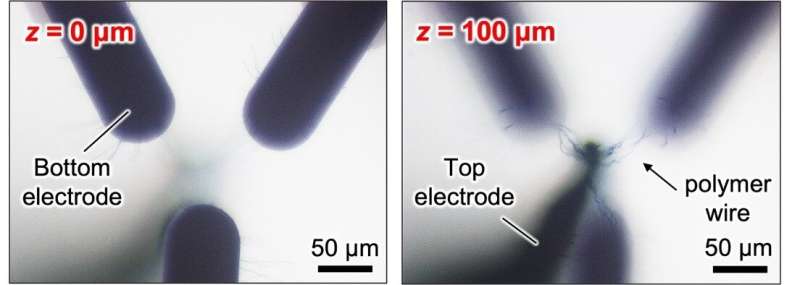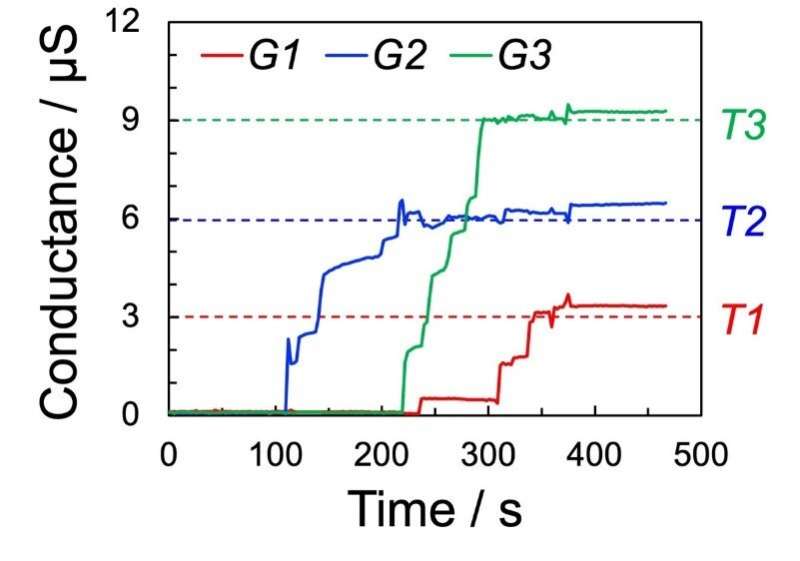This article has been reviewed according to Science X's editorial process and policies. Editors have highlighted the following attributes while ensuring the content's credibility:
fact-checked
peer-reviewed publication
trusted source
proofread
Researchers grow bio-inspired polymer brains for artificial neural networks

The development of neural networks to create artificial intelligence in computers was originally inspired by how biological systems work. These "neuromorphic" networks, however, run on hardware that looks nothing like a biological brain, which limits performance.
Now, researchers from Osaka University and Hokkaido University plan to change this by creating neuromorphic "wetware." The work is published in the journal Advanced Functional Materials.
While neural-network models have achieved remarkable success in applications such as image generation and cancer diagnosis, they still lag far behind the general processing abilities of the human brain. In part, this is because they are implemented in software using traditional computer hardware that is not optimized for the millions of parameters and connections that these models typically require.
Neuromorphic wetware, based on memristive devices, could address this problem. A memristive device is a device whose resistance is set by its history of applied voltage and current. In this approach, electropolymerization is used to link electrodes immersed in a precursor solution using wires made of conductive polymer. The resistance of each wire is then tuned using small voltage pulses, resulting in a memristive device.
"The potential to create fast and energy-efficient networks has been shown using 1D or 2D structures," says senior author Megumi Akai-Kasaya. "Our aim was to extend this approach to the construction of a 3D network."

The researchers were able to grow polymer wires from a common polymer mixture called "PEDOT:PSS," which is highly conductive, transparent, flexible, and stable. A 3D structure of top and bottom electrodes was first immersed in a precursor solution. The PEDOT:PSS wires were then grown between selected electrodes by applying a square-wave voltage on these electrodes, mimicking the formation of synaptic connections through axon guidance in an immature brain.
Once the wire was formed, the characteristics of the wire, especially the conductance, were controlled using small voltage pulses applied to one electrode, which changes the electrical properties of the film surrounding the wires.
"The process is continuous and reversible," explains lead author Naruki Hagiwara, "and this characteristic is what enables the network to be trained, just like software-based neural networks."

The fabricated network was used to demonstrate unsupervised Hebbian learning (i.e., when synapses that often fire together strengthen their shared connection over time). What's more, the researchers were able to precisely control the conductance values of the wires so that the network could complete its tasks.
Spike-based learning, another approach to neural networks that more closely mimics the processes of biological neural networks, was also demonstrated by controlling the diameter and conductivity of the wires.
Next, by fabricating a chip with a larger number of electrodes and using microfluidic channels to supply the precursor solution to each electrode, the researchers hope to build a larger and more powerful network. Overall, the approach determined in this study is a big step toward the realization of neuromorphic wetware and closing the gap between the cognitive abilities of humans and computers.
More information: Naruki Hagiwara et al, Fabrication and Training of 3D Conductive Polymer Networks for Neuromorphic Wetware, Advanced Functional Materials (2023). DOI: 10.1002/adfm.202300903
Journal information: Advanced Functional Materials
Provided by Osaka University





















